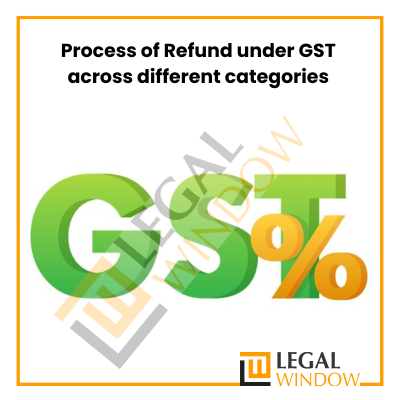With the advent of globalization of Indian economy and growth of the international business the campaign of workers thereon, the world has also been enhanced. Social protection is a vital dimension while structuring the international assignments for the employees. Any social security advantage payable in the host country may become an added cost to the employer, specifically in the case where there are limits for refund. It is in this reference that Social Security Agreements (“SSAs”) observed between countries came into possibility and they need to be sharply evaluated to help reduce the financial implications.
When does an Indian employee is considered as an International Worker?
Indian Government via its initiative for the advantage of both employers and employees has entered into Agreement by various countries to secure that employees of home country do not leaves contribution in that country, take the advantage of tantalization term for deciding the eligibility for pension, may be able to get the pension in the country where they choose to exist, and making double social security contributions by the employers for the same set of employees. Employees PF Organization has been authorized to issue the Certificate of distribution to the employee employed to the countries having signed Agreement with the Indian Government.

What is Social Security Agreement?
Bilateral agreement between India and a foreign country designed to protect the interests of cross border workers is Social Security Agreement (SSA). It provides avoidance of ‘double coverage’ and ascertain similarity of remedy to workers of both countries from a social security plan.
How to calculate the Employee Pension Scheme for International Workers?
The monthly pension amount under the Employees Pension Scheme is decided based on the pensionable salary and the pensionable service period of the member employee. The amount can be computed using the below-mentioned formula.
Pensionable salary (annual) * Pensionable Service (in years) / 70 = monthly EPS pension
Before further illustrating the formula and calculating the pension, here are brief discussions for pensionable salary and pensionable service.
Pensionable salary
The average monthly salary of the employee in the recent 12 months of service is the pensionable salary. Any non-contributory day in the time span of the latest 12 months will not be considered, and the benefit will be given to the employee.
Suppose the monthly salary of one employee is 20,000. The contribution to the EPF pension scheme is 8.33%. In this scenario, the pensionable salary will be:
₹ 20,000 (monthly salary) * 8.33 (EPF pension contribution) / 100 = 1,666 (monthly pensionable salary)
Annual pensionable salary= 1666*12 (19,992)
In case an employee does not start working on the 1st of a month, his salary for the month will be given for his or her working days and not for 30 days. Suppose, one starts working on the 5th of a month, the salary will be calculated for 25 days based on the payment of each day. However, the monthly salary for EPS calculation will be the salary of the complete month, i.e., of 30 days.
Pensionable Service
Pensionable service is the period an employee has served. In case an employee withdraws the EPS before completing the minimum service period, i.e., 10 years and starts working for some other company, the contribution for the EPS scheme will have to be reset.
While calculating the pensionable salary, one must keep the following points in mind.
- The pensionable service span is counted on a 6-month basis as it is the minimum period of pensionable service.
- In case the service period is 5 years and 3 months, the span of pensionable service will be counted as 5 years. However, if the span crosses 6 months, it will be considered a year, which means a span of 5 years and six months or more will be counted as 6 years.
- Employees are rewarded an additional 2 years of pensionable service for completing 20 years in service.
Now, let’s calculate the monthly pension using the previous formula.
19,992 (annual pensionable salary as calculated in the ‘Pensionable Salary section) * 18 (years of pensionable service) / 70 = 5,141 (monthly EPS pension)
What is the withdrawal limit of for Employee Pension Scheme for International Workers?
The EPS rules are more stringent and in general, where there is no applicable SSA in force with the home country, IWs are not entitled to pension benefits when they leave India, regardless of accrued employer contributions. (Employee contributions are only allocated to the EPF, so no employee contributions are lost).
The exception to this rule is where an IW has been employed for a period of 10 years or more. Also, if there is an applicable SSA, the IW will probably be entitled to a totalization benefit in the home country.
Contributions of Employee Pension Scheme for International Workers
International worker coming from a country with which India has SSA and is holding COC (certificate of Coverage) is not required to contribute by the Social Security Funds of host countries.
How to check Employee Pension Scheme Amount?
You can follow these few steps for viewing the EPS amount on the EPF pensioner’s portal.
- Visit the EPF pensioner’s portal, https://passbook.epfindia.gov.in/MemberPassBook/Login.
- Go the ‘Services’ tab and click on ‘For Employees’.
- Tap on ‘Member Passbook’ and lead to the next screen.
- Log in using the UAN or Universal Account Number and password.
- Once logged in, tap on your respective Member Id from the given options.
- The details will appear. Check the EPS amount in the ‘Pension Contribution’ column.
One can check the EPS amount in their EPS account passbook as well. The last column of the passbook displays the monthly EPS contribution made by the employer. You can download the passbook from the EPF pensioner’s portal.
Conclusion
In conclusion, it is definitely both from our investigation and from the outcome of the employer pension scheme survey, that all stakeholders: The Government, employers, and employees have a role to play in fostering a conducive pension atmosphere in India. The Government required to think of higher tax incentives, the consistent tax treatment of various pension plans, and transparency in law to increase pension extension in India. Employers not only required to give a pension stage to their employees but also required to educate them on the various pension plans and their related advantages. Employees need to outline their retirement aim and choose a pension project that will help them construct a terminal corpus, which will realize these objectives.
LegalWindow.in is a professional technology driven platform of multidisciplined experts like CA/CS/Lawyers spanning with an aim to provide concrete solution to individuals, start-ups and other business organisation by maximising their growth at an affordable cost. Our team offers expertise solutions in various fields that include Corporate Laws, Direct Taxations, GST Matters, IP Registrations and other Legal Affairs.
Categories
- Agreement Drafting (23)
- Annual Compliance (11)
- Change in Business (36)
- Company Law (147)
- Compliance (88)
- Digital Banking (3)
- Drug License (3)
- FEMA (17)
- Finance Company (42)
- Foreign Taxation (6)
- FSSAI License/Registration (14)
- GST (116)
- Hallmark Registration (1)
- Income Tax (199)
- Latest News (34)
- Miscellaneous (164)
- NBFC Registration (8)
- NGO (14)
- SEBI Registration (6)
- Section 8 Company (7)
- Start and manage a business (20)
- Startup/ Registration (126)
- Trademark Registration/IPR (40)
Recent Posts
About us
LegalWindow.in is a professional technology driven platform of multidisciplined experts like CA/CS/Lawyers spanning with an aim to provide concrete solution to individuals, start-ups and other business organisation by maximising their growth at an affordable cost.







